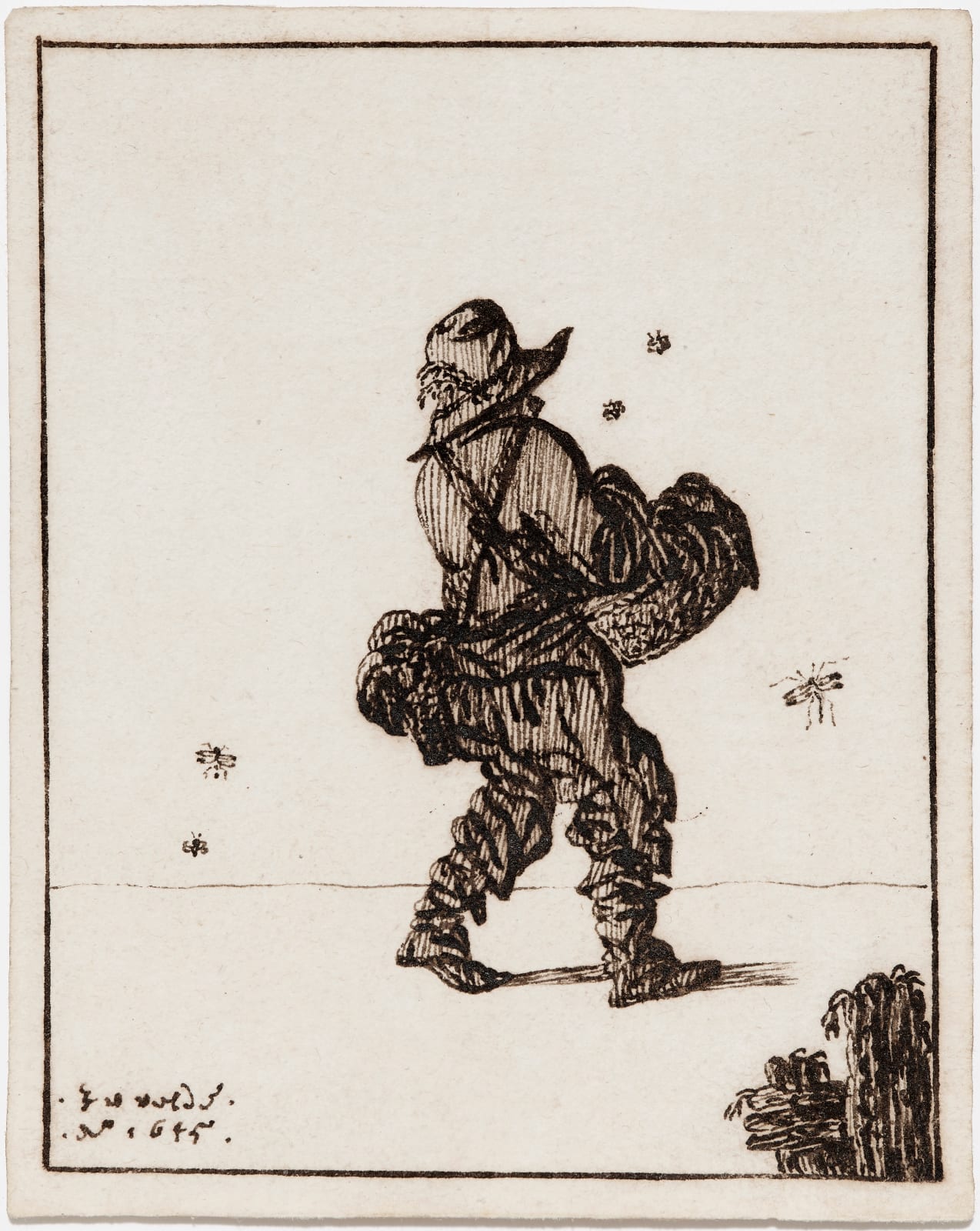Jan Jansz van de Velde (1620-1664)
Jan Jansz. van de Velde III was born in Haarlem. First taught by his father, the well-known engraver Jan van de Velde II (ca. 1593 – 1641), his paintings also reveal the influence of the Haarlem still life painter Willem Heda. On 4 April 1643, Van de Velde is recorded as a painter in Amsterdam, aged 23, on the occasion of his marriage with Dieuwertje Willems Middeldorp (born 1619). He remarried in Amsterdam in 1656, suggesting that he spent most of his career in the city. At this date, Van de Velde is recorded as a silver wire drawer; thirty-two years later his wife is recorded as the widow of the painter Van de Velde. Although it is generally assumed that he was buried in Enkhuizen’s Westerkerk on 10 July 1662, the fact that his second wife was still in Amsterdam he might equally well be the Johannes van de Velde buried in the Zuiderkerk on 2 September 1664. During the first two years of his second marriage, children of a Jan van de Velde were buried in the same church.[1]
Van de Velde’s dual identity as a draughtsman and a painter in the archival record reflects the two areas of his artistic practice. Best known as a still life painter, his humorous drawings demonstrate his familiarity with a range of sources. A little over forty intimate tabletop still life paintings are known by Van de Velde, dated between 1639 and 1662, and can be found in the Rijksmuseum, Amsterdam, Frans Hals Museum, Haarlem, and the National Gallery of Art, Washington, among many other museums. His signature is often an elaborate calligraphy, revealing the influence of his grandfather Jan van de Velde I (1568-1623), publisher and master of penmanship.
Only one drawing of a jug in the collection of the Museum of Fine Arts in Brussels connects the artist’s two separate practices. Other drawings, all drolleries, by Van de Velde are in collections in Germany: in the Herzog Anton Ulrich-Museum (8), Braunschweig, the Städel (4), Frankfurt[2] and in a private collection (23).[3] In these drawings, often referencing earlier motifs from Hans Holbein or emblem books, Van de Velde expresses himself beyond the narrow range of his painted still lifes. Familiar with themes of the dance of death or an allegory of vice–outside the subject boundaries of still life– Van de Velde is a proficient draftsman, adept at conveying physiognomy and gesticulation in an economical manner. Dated between 1643 and 1645, many of the drawings have in common a single figure with a touch of vegetation and a simple horizontal line. Moths, flies, bumblebees, dragonflies, beetles or caterpillars outline the silhouette of the singular figure on the unfilled sheet.
While many of the motifs are in a direct lineage from Hieronymus Bosch, Van de Velde’s drawings also reference Jacques Callot’s drawings with which he may have been familiar with through Adriaen van de Venne or Rembrandt. His grandfather’s collection of books and prints will also have provided access to pictorial sources. Nevertheless, some of his drawings are inscribed “inventor” under his signature, supporting the idea that he conceived anew these grotesque figures rather than following an existing emblem book. Our hawker, dressed in rags, surrounded by flies, insinuates the smelly business of the ragpicker. Paper, made from rags in paper mills, created a new profession: the rag-and-bone man buying up rags in the villages and towns, selling his wares on to paper millers. With the development of the art of printing came an increased demand for paper, rags became a scarce commodity. As a result, rags were regarded a strategic raw material not allowed to be exported. Could our drawing insinuate that the smelly schmatte metamorphoses into the paper in our own hands?
[1]Adriaan van der Willigen & Fred G. Meijer, A Dictionary of Dutch and Flemish Still-life Painters Working in Oils, 1525-1725, Leiden 2003, pp. 201-202
[2] Annette Strech, a.o. «Nach dem Leben und aus der Phantasie». Niederländische Zeichnungen vom 15. Bis 18. Jahrhundert aus dem Städelschen Kunstinstitut, Frankfurt am Main, exh.cat. 2000, pp. 108-109
[3] Reinhart Schleier, ed., Neue Zeichnungen alter Meister. Entdeckungen au seiner Barocksammlung, Münster 1981, pp. 122-144
Provenance
Haboldt & Co., Paris, 1980s
Private collection, Washington DC



